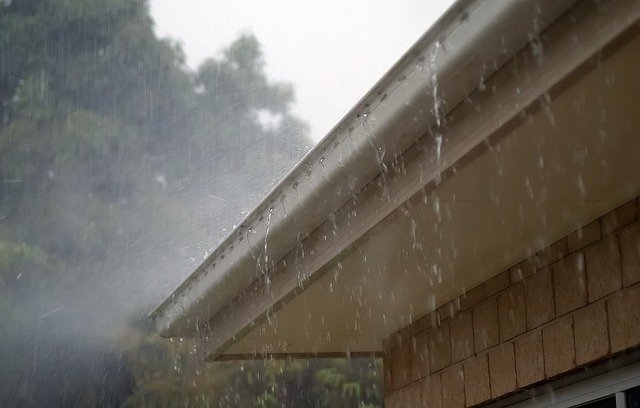Storm hit your area? If your house went through a wind storm, tornado, hurricane, or hail storm, you will need to inspect your roof as soon as possible. Roofs are constructed to weather the elements, but a severe storm accompanied by debris can significantly affect their structure. But roof damage is not always easy to spot. Knowing how much damage your roof has sustained is the first step to repairing it for the seasons ahead.
Although some roof damage is apparent, you need to know where to look when inspecting your roof after a storm. Below are some tips on how to spot signs of damage and schedule repair, if needed.
1. Inspect the gutters
Gutter damage is not easy to detect. Your gutters may look fine from a distance, but they could be blocked or bent out of shape by debris. Any damage may cause water to leak and seep through the roof, resulting in rot and mold if not fixed.
2. Look for bruising
Hailstorms will cause bruises on all types of roofing material. If some parts of your roof feel soft than other parts, highlight that area with chalk for showing the area of damage to the roofing repair company.
3. Check chimneys
If your property contains one or more chimneys, you should examine them for cracked joints and damaged bricks. As chimneys are often independently settled from the residence, you will need to pay more attention to the flashing. And while climbing your roof to perform the inspection, be careful not to step on damaged shingles so as to avoid aggravating other storm damage.
4. Look for missing flashing
It’s also important to inspect your roof’s edges, as well as around chimneys, vents, and skylights for missing flashing. Severe storms can tear off flashing, especially around exposed areas like rigid vents. You should replace these immediately to avoid bigger problems down the road.
5. Don’t forget cracking
It’s common for roofing materials to crack during a severe storm. Cracks present on tar, metals, asphalt, or gravel roofs require temporary repair until an experienced roofing company performs complete repair.
6. Inspect for water ponds
If you live in a flat-roof home, long and heavy storms can result in the creation of water ponds in uneven areas of your roof. If you don’t address this properly, these pools will continuously put synthetic materials under stress, raising the odds of leaks and ruptures. Moreover, the ponded water on the roof could cause rusting, which leads to leaks.
7. Look for loose tiles
The pressure of tiles above can loosen a whole row of roof tiles. You can straighten them if there’s no damage and the tile battens are still intact. But make sure to proceed with caution, as you’ll also need to support the overhead tiles while straightening.
9. Internal inspection
As the last step, inspect the inside of your home for peeling paint, stains, rust, mold, and water damage. These signs indicate that your roof could be leaking. Also, check for any sign of moisture in your attic, which can be a strong indicator of a damaged roof, even if the outdoor inspection doesn’t reveal storm damage. A leaking roof might compromise the integrity of your home, so make sure to schedule a repair or replacement as soon as possible.
Temporary Roof Repairs
You can perform temporary roof repairs until professionals visit to perform a thorough inspection. For example, you could do:
- Shingle spot repairs: This involves replacing missing and damaged shingles with durable replacement material to avoid any penetration and leaks until proper repairs are done.
- Water displacement: With a motor-driven or hand pump, you can remove excess water that has accumulated on your roof. These water pools can cause significant damage due to their weight. Address these pools to avoid the need for expensive repairs later.
- Boarding and sealing leaks: You could also seal wooden planks with exterior tarpaulin to improve your house’s insulation if the recent storm created openings through the crawlspaces of your home. This also helps keep any unwanted animals at bay and reduces the odds of moisture forming in these areas.
Note: If you recently purchased a new roof system, the vendor might have given you a warranty. But not all roof warranties work the same. In reality, most roof warranties cover only installation or manufacturer defects – not weather-related damage.
Proper Storm-Damaged Roof Repair
Temporary repairs can only work so much for storm-damaged roofs. Although some storms barely leave a scratch, others cause extensive damage that’s hard to repair on your own. Fortunately, storm clean up specialists like The Disaster Company can fix any damage caused by storms, including roof damage. As Utah disaster clean up specialists, we have many years of experience in storm damage restoration and can efficiently repair your roof after a devastating episode.
Delaying repairs can cause serious damage to your home. Get in touch if your roof has damage from heavy winds, fallen trees, or a hailstorm. We will inspect your roof, clean up, sanitize, and repair the damage for a pristine, strong roof that will go the distance in weathering the elements.

